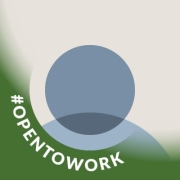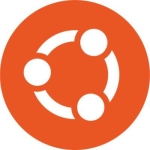What is our primary use case?
We are mostly using it for application servers, infrastructure servers, and database servers.
How has it helped my organization?
Red Hat Enterprise Linux lends itself to a lot of automation. We are able to manage many more servers with less staff and by using other Red Hat products such as Ansible. Those are the things that I like.
We are using Red Hat Enterprise Linux for containerization projects. Their Podman product has made it easier. It comes with a lot of security. It is a drop-in product or replacement for Docker. I have used Docker before and switching to Podman was very easy. I just saw the demo for the Podman desktop, and I am looking forward to using that. It will hopefully help me streamline container usage and container deployment in Kubernetes or OpenShift.
It inherently has a lot of functions built in for risk reduction, business continuity, and maintaining compliance. For example, it has SELinux, certain firewalls, logging, and all those things. It has all the built-in features required to meet the needs. We can plug in other third-party tools to have it gather information, or we can send logs to centralized locations to track activity and do audits and things like that.
I use Red Hat Insights for different things. I do not use it much to look at security risks. I know that it has those features, but I use a different tool like a Satellite server to take care of patching and things like that. Red Hat Insights provides us with vulnerability alerts and targeted guidance, but it has not affected our uptime much. It is good to see that information. I can see those vulnerabilities, and I can see action steps or remediation steps that I can take. All my servers are patched on a cycle, so as the cycle goes through, each server gets patched based on its own cycle. It does not really affect the uptime.
What is most valuable?
I like the stability that comes with Red Hat. That has always been the feature that I like. They do not always have the newest features, but they prioritize stability, which is important in the production environment.
What needs improvement?
Red Hat should keep doing what they have always done. They should continue to be a leader in the open-source space. They should keep innovating and keep creating great products. They can allow more access to their training and their products' testing. There are ways to do it now. You might have to get a certain type of account to test their products. It might be easier if you can just download the product and test it out.
For how long have I used the solution?
In a production environment, I have been using Red Hat Enterprise Linux for about five years. I have used Red Hat Enterprise Linux clones such as Fedora and CentOS for about 15 years or maybe longer.
What do I think about the stability of the solution?
It is absolutely stable. It is 100% stable.
What do I think about the scalability of the solution?
It is good. It scales well. With the tools that Red Hat provides, it does not matter if you have 10 servers, 100 servers, or 1,000 servers. They make it simpler with Ansible. Ansible is your friend.
How are customer service and support?
They are top-tier. Support is probably their number one selling point. As long as you give the Red Hat engineers what they need, they are very good at providing new solutions. I would rate them a ten out of ten.
How would you rate customer service and support?
Which solution did I use previously and why did I switch?
I have used Red Hat clones in other positions. I might as well just say it is Red Hat because it is a clone, so I have been using Red Hat all along if we look at different products.
I have worked with CentOS, Rocky Linux, etc. The main difference is that Red Hat's support is top-tier. There is also stability. With the ecosystem that they have built, there are a lot of tools to help me manage. They have Ansible and other great tools to help manage the product. You cannot say the same about Windows. They might have a different way of doing things.
How was the initial setup?
We have deployed Red Hat Enterprise Linux on-premises. We have a hybrid cloud environment, but we run other types of servers there. They are mostly Windows, and they are run on Azure cloud. We do not run Red Hat Enterprise Linux in a hybrid cloud environment, but there is always an opportunity to do that in the future.
The Red Hat servers that we have are on-prem. We use VMware and the tools that they provide to deploy Red Hat.
Its initial deployment was done a long time ago. It is a straightforward process to install it as long as you are not trying to do anything complicated.
We do not have a deployment strategy. We install it based on the requirements. If it is a web server or database server, there are different things that you need to do, but it is pretty straightforward. It is a good process.
What about the implementation team?
We took help for deploying Red Hat and purchasing the license and maybe the hardware. We probably used CDW and Advizex. They are probably based in Pittsburgh.
What was our ROI?
Time savings is the biggest return on investment. I can do more in less or a shorter amount of time. The time savings depend on what you are working on, but you can potentially have about 75% time savings.
What's my experience with pricing, setup cost, and licensing?
I have very little experience with pricing and getting quotes. The whole VMware thing happened, and everybody is looking at different alternatives. At this point, any competitor is probably a good choice based on the cost.
What other advice do I have?
Everyone should evaluate what their needs are, test out different products, and pick the product that is best for their needs. I know that the Red Hat Enterprise Linux is a very good solid product. One thing I would say is that their support is top-tier, so from that aspect, I would recommend Red Hat.
At this time, I am trying to develop a platform that facilitates developer workflows. We may adopt more of a GitHub mindset and use Red Hat tools, such as OpenShift and Ansible.
We are currently not using containers as much as we would like to. We are working on setting standards. That is going to come down the road. Our workloads right now are mostly virtual machines and monolithic applications built on VMs. We will use them more. We will make more microservices and use pods to contain the applications. We will use more Red Hat tools.
Overall, I would rate Red Hat Enterprise Linux a nine out of ten. There are many things to take into account. From a production perspective, it is a ten out of ten. From the innovation and latest features perspective, it is probably a seven. That is not necessarily a bad thing because that is their unique point. They prioritize stability, but if you want something with your features, you can use Fedora.
Which deployment model are you using for this solution?
On-premises
Disclosure: My company does not have a business relationship with this vendor other than being a customer.



















